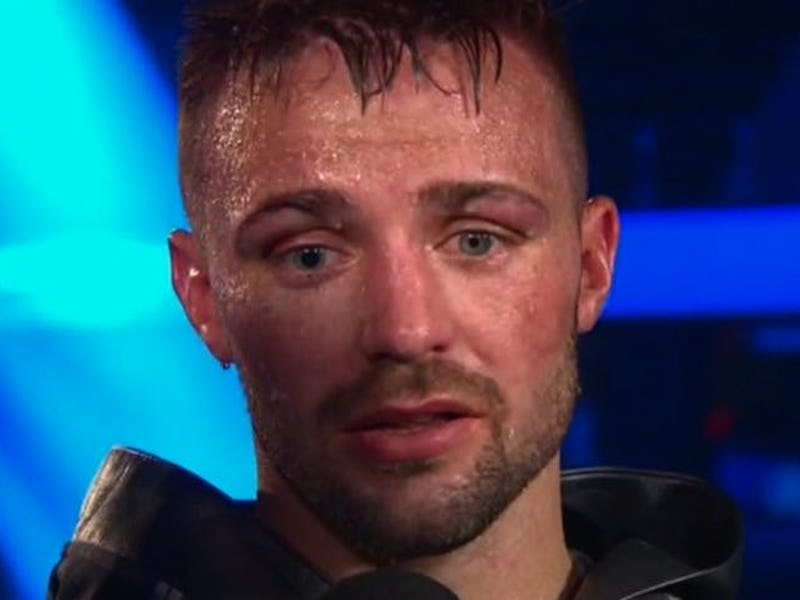Boxer Josh Taylor's Huge Pupil Is a Weird Side Effect of Ringside First Aid
At least it's not brain damage.

Saturday night, Scottish boxer Josh Taylor spent roughly an hour getting punched in the face by Ukrainian veteran Viktor Postol, an opponent he admittedly underestimated. The Prestonpans boxer won the fight, but still, when he looked into the camera for his victory photo some Redditors realized there was something a bit off with one of his pupils: One of them was roughly twice the size of the other, prompting worried speculation that he had suffered brain damage, or at least a concussion during the fight.
There is no confirmation that Taylor suffered any actual concussion related to this eye injury. But we do know that his dilated pupil was the result of the treatment he received. One of the ringside “cut men” applied adrenaline to a laceration on Taylor’s eye after a particularly nasty hit from Postol, as Taylor’s trainer confirmed in a tweet to concerned fans later that night.
Taylor's right pupil, still dilated post-fight
ESPN reported in 2008 that an adrenaline solution called adrenaline 1:1,000 is typically used ringside to stem the flow of blood and keep boxers in the fight, but it’s also a hormone produced by the sympathetic nervous system during the “fight or flight response”. Numerous studies have confirmed that activating the sympathetic branch of the autonomic nervous system can cause a “pupillary response” in a tiny muscle that controls the opening of the pupil: the iris dilator.
A tweet from Taylor's trainer post-fight
On the iris dilator muscle are a series of receptors (called alpha-1 receptors) that are attuned to the presence of hormones like adrenaline. When this muscle is exposed to the hormones produced by the fight or flight response, those alpha-1 receptors become stimulated, causing a series of events in the eye that contract the iris dilator muscle and force the pupil to open wide.
The iris dilator muscle
There is experimental evidence that adrenaline solutions can cause pupil dilation. In a small 2015 study published in the Journal of Ophthalmology, 18 cataract patients were given 1 milliliter of epinephrine hydrochloride (an adrenaline-based compound) before a cornea operation. The surgeons then measured the pupil diameter of reach participant every five minutes for 30 minutes before surgery.
They found that the pupils in the epinephrine group dilated from 2.20 millimeters on average to 5.97 millimeters in the final five minutes before surgery. They were significantly less dilated than those of a control group that received a phenylephrine eye drop, but phenylephrine is actually a drug also intended to mimic the effects of epinephrine — it’s also known pupil dilator — so the principle still holds.
During the course of the fight, Taylor’s sympathetic nervous system was likely already pumping hard. But when the cut-man applied the extra tiny bit of epinephrine to his cut above his eye, Taylor could have gotten a quick dose of adrenaline to the alpha-1 receptors in his right eye. All of this is not to say that irregularities with pupil dilation aren’t signs of concussions — but in this case, it seems as though Taylor’s brain is as normal as it ever was, considering what he does for a living.